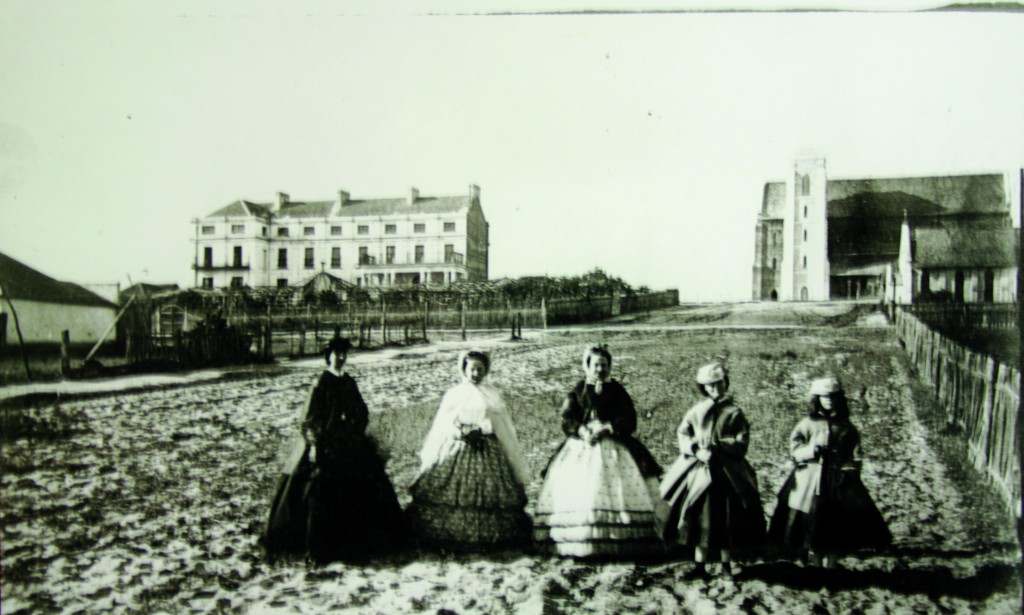
By Hal Colebatch
When Pope Alexander VI divided the as yet little-known world between Spain and Portugal in 1493, a year after the modern discovery of America, Western Australia was on the Portuguese side of the line.
As a result, it is likely that the first Catholics to visit Western Australia may have been Portuguese sailors, but the Portuguese kept the records of their voyages secret.
Perhaps long-forgotten archives in Portugal or its former colonies will one day reveal something beyond speculation. Plainly, however, if they did visit they did not consider the place worth garrisoning.
The Dutch who carried out some desultory explorations and several of whose ships were wrecked on the coast were Protestant.
Documents discovered in the Vatican archives have revealed that on 15 July 1681 nine cardinals of the Congregation for the Propagation of the Faith appointed a 60-year-old Dominican priest in Manila, Fr Vittorio Riccio, to be in charge of Terra Australis, believed to be a great continent reaching to Antarctica.
The visionary Spanish seaman and explorer Captain Quiros also dreamed of discovering a
‘Great South Land of the Holy Spirit’. However, there is no evidence that the Spanish actually reached Australia although their colony in the Philippines was relatively close.
The first Catholics to visit Western Australia of whom we know anything certain were French explorers under Francois de St Allouarn, who anchored off Cape Leeuwin on 18 March 1772.
On 30 March he landed at Shark Bay, raised the French flag, and claimed the land for the King of France. A sailor died and was buried on shore, presumably with some religious ceremony, although there is no record.
In 1792, the ships of the La Perouse expedition, carrying two chaplains, Canon Ventenat and Dom Pierson OSB, who also served as naturalist and astronomer, anchored at Esperance in December. Dom Pierson fell overboard there and had to be rescued from a shark.
The next French explorer to visit, Nicholas Baudin, in 1801, may have brought along a priest, but this is uncertain as, by that time, the atheist French Revolution had been raging.
Chaplains were carried on French ships which visited later in the post-Napoleonic period. Presumably, services were held when they went on shore.
The French government at one time considered establishing settlements in WA (Rottnest and Garden Island were named the Isles Louis Napoleon on French charts) but finally decided that sharing a land frontier with Britain was not a good idea. Britain emphatically agreed.
The British government then decided to establish settlements on the west coast, at Albany in 1826 and at the Swan River in 1829.
There were Catholics among the soldiers and settlers, several of whom became prominent in the community.
These included Bernard Smith, a brick-maker and builder whose father had come to the colony as a colour-sergeant with a detachment of the 21st Fusiliers in 1833.
A genial and public-spirited man, he was elected to the first Perth city council.
Patrick Marmion owned the Emerald Isle Hotel in Henry Street and started whaling at Marmion Beach, which is named after him.
Robert D’Arcy was a school master.
Thomas Little, later to become prominent in church circles, arrived in the colony in 1838 and established a prosperous farm at Leschenault Inlet near Bunbury.
Laurence Mooney arrived as a soldier in 1833. He ended up in Albany where he underwent great spiritual loneliness due to the lack of a priest. Cardinal Patrick Moran, who wrote the History of the Catholic Church in Australasia, recorded how on Sundays he had climbed to the summit of Mount Clarence alone to recite the Rosary and pray.
For a long time the only priests the tiny settlement of Albany saw were those who came with occasional visiting ships.
The first settlements in Western Australia were actually under the bishop of Mauritius.
The Catholic Church in Western Australia was first ruled by Benedictines when, in 1834, Rome detached Australia from Mauritius and created the new vicariate apostolic of New South Wales, based in Sydney and headed by the Downside monk, Dom John Bede Polding.
In December 1841, Robert D’Arcy sent a letter to the authorities in Sydney asking for spiritual aid for the colony.
As a result, Fr John Brady was appointed vicar general of the Swan River Colony by Archbishop Polding in 1843, and consecrated first bishop of Perth in the College of Propaganda, Rome, on 18 May 1845.